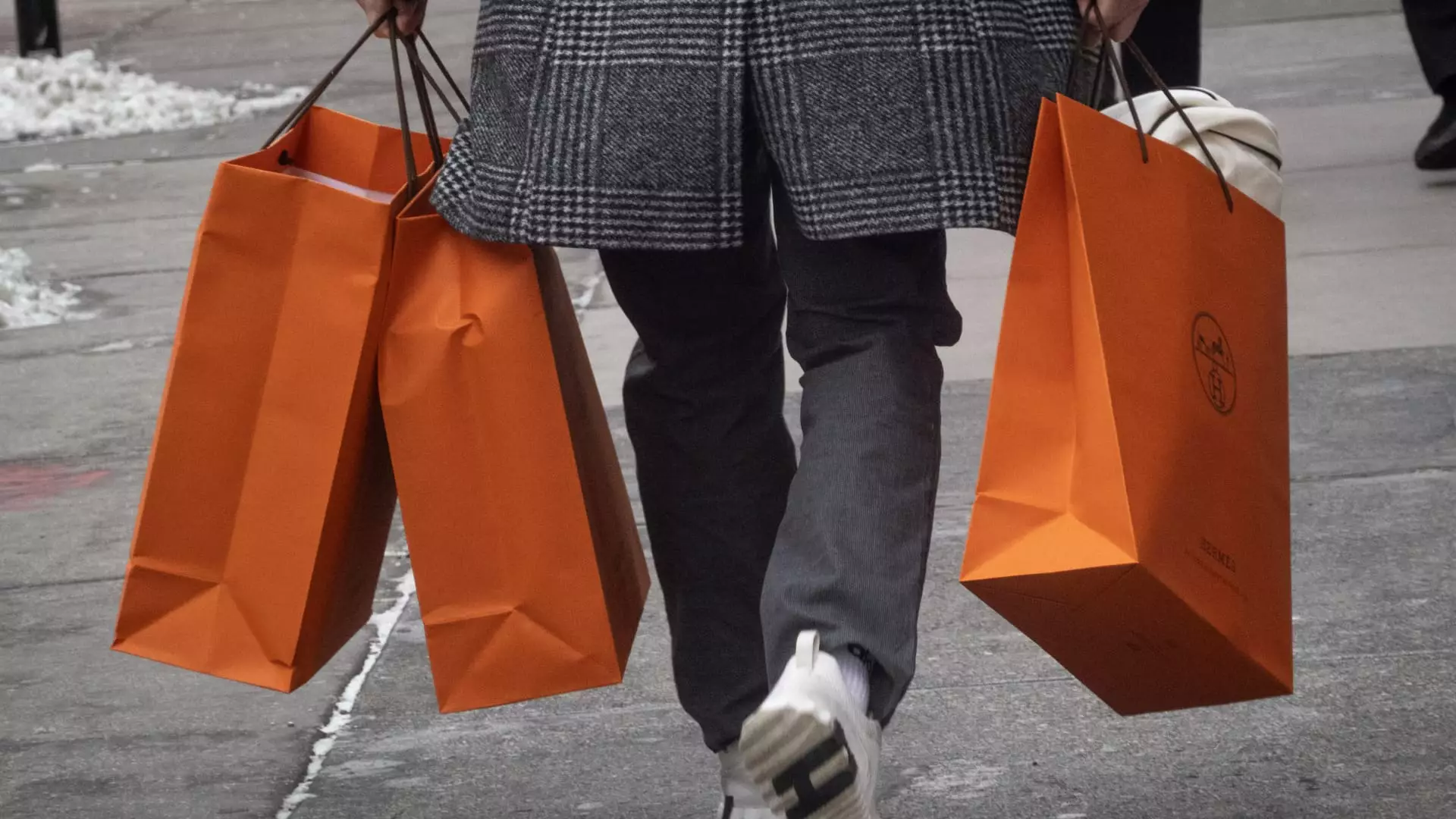In an era defined by economic uncertainty, Europe’s luxury industry finds itself at a crossroads, caught between the allure of opulence and the harsh ramifications of international trade policies. The initial effects of U.S. tariffs on imports from the European Union might seem manageable for renowned brands like LVMH, Kering, and Hermes, but the looming specter of a broader economic downturn represents a formidable threat to their recovery aspirations. The glimmer of hope seen in recent financial reports could quickly be overshadowed by unforeseen consequences stemming from geopolitical maneuvering.
Despite borders separating the American market from European luxury houses, the interconnectedness of the global economy cannot be overstated. High-end fashion brands, synonymous with European craftsmanship and heritage, may hesitate to relocate production. Yet, a significant jump in import costs is likely to compel these companies to pass the burden onto consumers. While wealthier shoppers traditionally have the capacity to absorb price hikes, it would be naïve to assume they are impervious to economic strain. Analysts are already beginning to sound the alarm regarding the potential ripple effects of this precarious situation.
Economic Turmoil: A Perfect Storm?
The startling recommendation by JPMorgan, forecasting a 60% likelihood of recession following President Trump’s “Liberation Day” tariff announcement, serves as a chilling reminder of how quickly fortunes can shift in the luxury sphere. Adam Cochrane from Deutsche Bank hinted that uncertainties in the stock market could drastically affect consumer confidence, thereby derailing the anticipated bounce-back for luxury goods. It’s disheartening to think that while the sector clawed through challenges posed by COVID-19 and fluctuating consumer confidence, their trajectory might once again falter under the weight of political expediency.
Luca Solca, a sharp analyst at Bernstein, pointed out that while the immediate impacts of U.S. tariffs may appear small, the aftershocks are a cause for concern. The 15%-30% of sales that European luxury brands derive from the Americas might seem trivial at first glance, but as these firms sharpen their focus on a dwindling Chinese market, the importance of the U.S. sector becomes painfully clear. The fear of a recession could render even wealthy buyers cautious as they contemplate their next purchases.
China’s Woes and Global Implications
The scenario grows murkier when considering the already weakened demand from China, exacerbated by the imposition of crippling tariffs that could reach as high as 125%. The mantra of “globalization” appears increasingly hollow as national policies ripple across economies. What once seemed like an interdependent world where luxury brands thrived amid free trade may be disintegrating into a patchwork of protectionism. This environment threatens to disrupt the recovery process for an industry that is still grappling with the effects of a post-COVID commercial landscape.
As companies like Hermes and Burberry position themselves to withstand the fallout, others like Richemont and Moncler may struggle to navigate these challenging waters. The question remains: how many luxury brands can survive if their consumer base, typically buoyant, suddenly curtails spending due to economic anxiety? Even minor adjustments to purchasing habits among high-net-worth individuals could signal the beginning of a broader downturn, catching luxury brands off guard.
Buy High: The Repercussions of Tariffs
Current market behaviors suggest that consumers in the luxury sector are not merely passive observers but active participants in shaping the economic narrative. This intertwining of luxury brands and geopolitical tensions raises concerns about the potential for backlash against firms that visibly adjust prices in response to tariffs. The rise of social media and consumer activism means that poor decisions can lead to severe ramifications in brand loyalty and consumer perception.
With analysts painting a grim picture, it’s increasingly clear that we may be facing a period of prolonged stagnation instead of resurgence. Reports suggest that Deutsche Bank’s projection for luxury sector growth has already been revised downward, a disappointing sentiment echoed by Citi’s assessment, marking a substantial deviation from earlier predictions. Amidst such troubling signs, it’s perplexing that companies have yet to substantially pivot in their strategies. The implicit disconnect between luxury markets and the political climate is not just a failure of risk assessment but perhaps symptomatic of a broader inability to adapt effectively to rapidly changing external conditions.
The Silver Lining? Resilience Amidst Uncertainty
Despite the mounting odds, it’s essential to recognize the resilience embedded within the luxury industry. The adaptability of brands to innovate under challenging circumstances has long been a hallmark of their success. However, this crisis demands more than opportunistic adaptations; it requires a reconceptualization of values that align with a changing consumer landscape. The challenge lies in whether these luxury brands can evolve beyond mere symbols of status and elitism to become advocates of sustainability, ethics, and community in a world that increasingly demands responsibility.
While the luxury market faces daunting pressures, the potential for a renaissance exists if brands are willing to make bold moves. Only time will tell if they emerge from this turmoil fortified or fragmented.

Leave a Reply